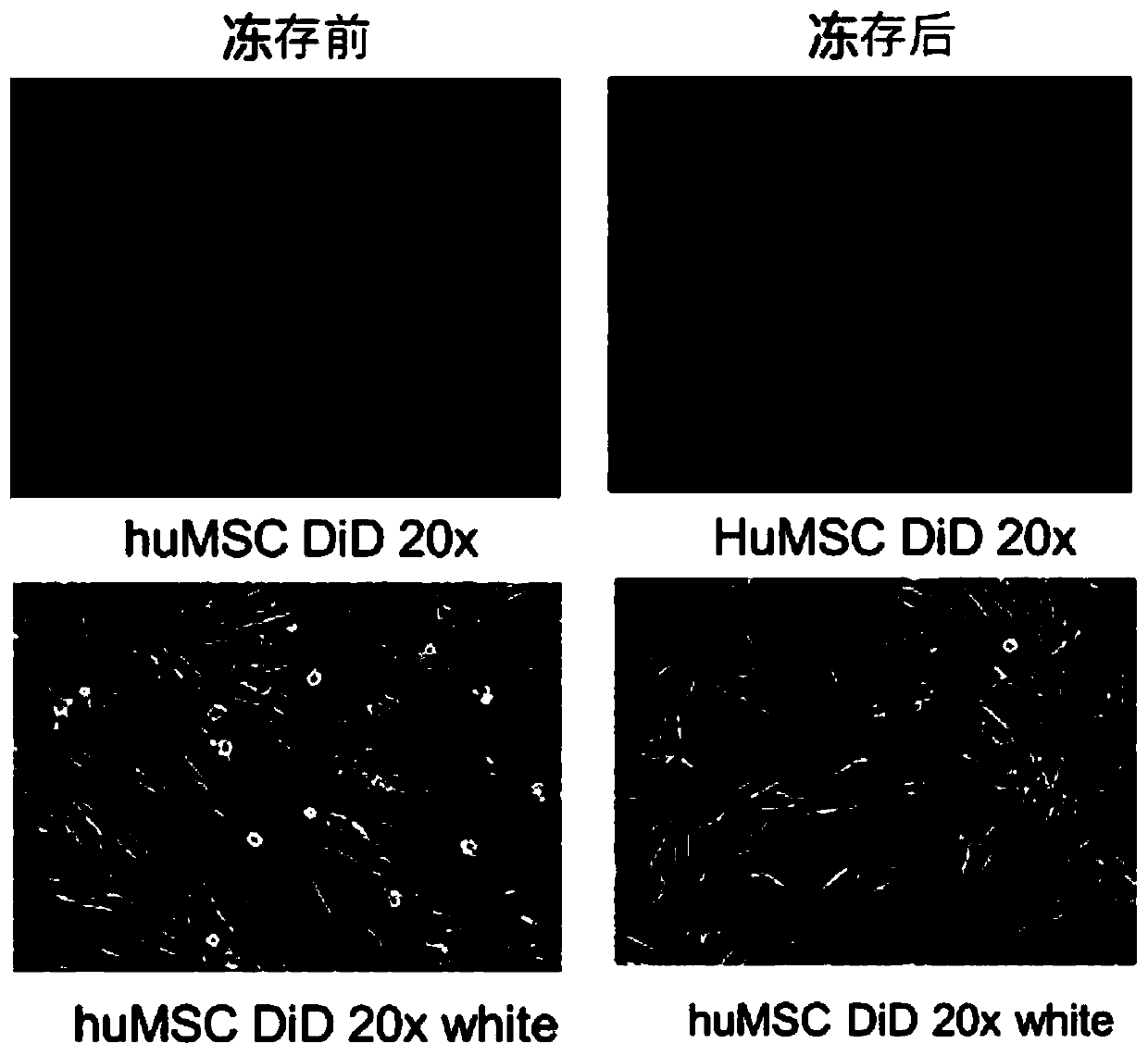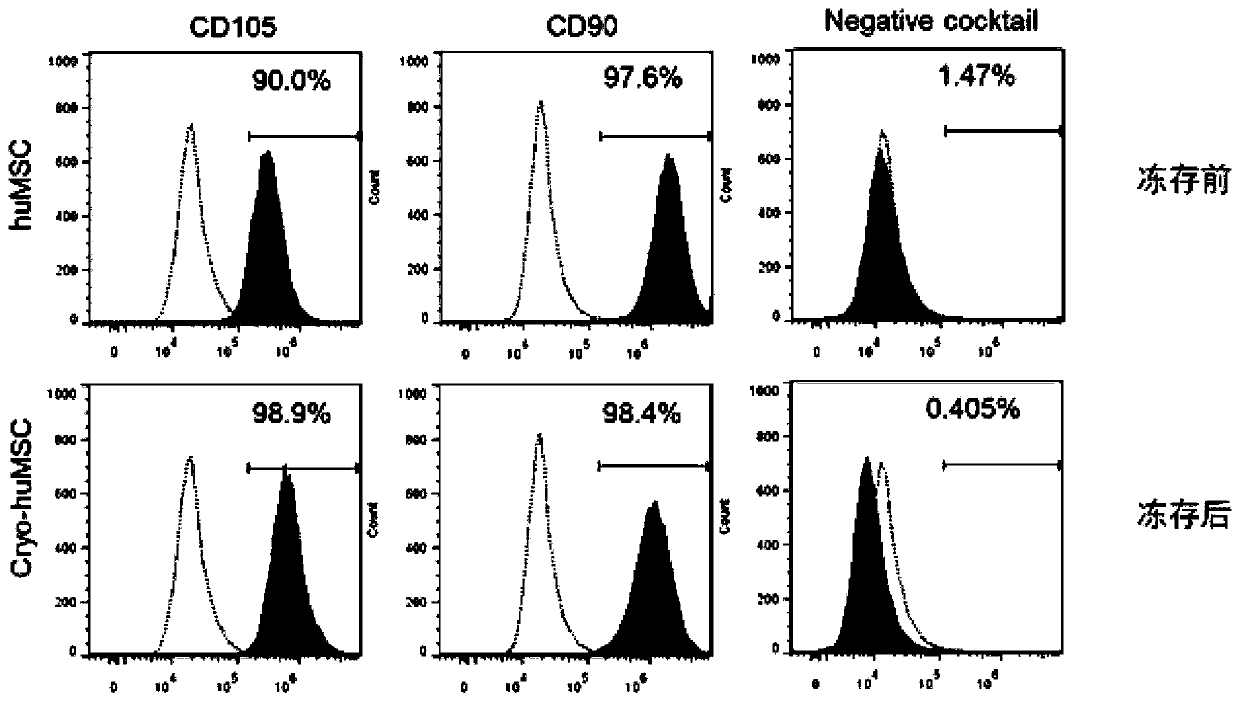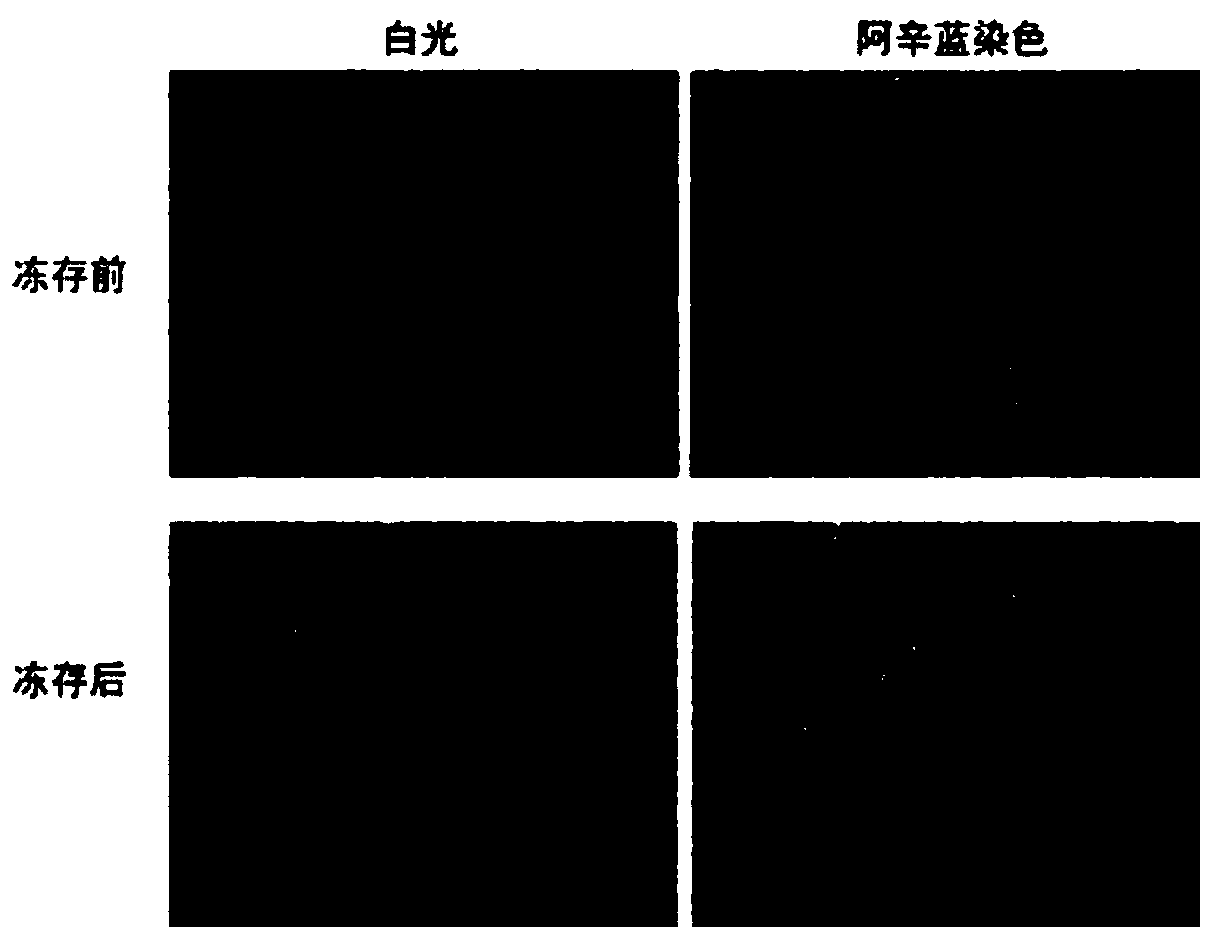Cryoprotectant for umbilical cord mesenchymal stem cells and application of cryoprotectant
A technology of mesenchymal stem cells and cryopreservation solution, which is applied in the field of umbilical cord mesenchymal stem cell cryopreservation solution, can solve the problems of clinical application limitations of mesenchymal stem cells, complex components of fetal bovine serum, side effects of antigens and antibodies, etc., and optimize the preparation volume and component concentration, the effect of good freezing effect
- Summary
- Abstract
- Description
- Claims
- Application Information
AI Technical Summary
Problems solved by technology
Method used
Image
Examples
Embodiment 1
[0063] A cryopreservation method for umbilical cord mesenchymal stem cells is provided, comprising the steps of:
[0064] (1) Wash the umbilical cord tissue (remove blood cells): add an equal amount of normal saline to the centrifuge tube containing the umbilical cord, tighten the cap, shake for 3 minutes to fully wash the umbilical cord tissue, then stand still for 3-5 minutes to separate the different phases, and suck off the lower layer Water phase; repeat the above operation three times until the lower layer is relatively clear.
[0065] (2) Ultrasonic microwave pulverization: After aspirating and discarding the normal saline, add preheated DMEM culture solution equal to the volume of the umbilical cord, place in a constant temperature microwave pulverizer, and ultrasonically pulverize at 37°C.
[0066] (3) Collect the precipitate: After digestion, centrifuge at 2000rpm for 10min, discard the digested umbilical cord in the upper layer, collect the bottom layer of the two t...
Embodiment 2
[0073] Identification of umbilical cord stem cells after cryopreservation
[0074] The P2 umbilical cord stem cells cultured in Example 1 were centrifuged and resuspended; after cell counting, the cell concentration was adjusted to 1×10 8 / L, react with human anti-CD105, CD90, CD34 and CD45 mixture (Cocktail) monoclonal antibody for 30min at room temperature, resuspend the cells with PBS, and detect with flow cytometry ( figure 2 ).
[0075] See the test results figure 2 It can be seen that the analysis of cell surface antigen marker expression of umbilical cord stem cells by flow cytometry before and after cryopreservation shows that the phenotype of umbilical cord mesenchymal stem cells has no obvious change after cryopreservation in the modified cryopreservation medium.
Embodiment 3
[0077] Chondrogenic ability test of umbilical cord stem cells after cryopreservation
[0078] The cells frozen in Example 1 were used as the group of the present invention, and the chondrogenic ability test was carried out. After 3-4 weeks of in vitro differentiation towards cartilage, see image 3 It can be seen that Alcian blue staining shows that the umbilical cord mesenchymal stem cells cryopreserved in Example 1 and the umbilical cord mesenchymal stem cells not cryopreserved have the same ability to differentiate into cartilage in vitro, and there is no obvious difference in ability.
PUM
| Property | Measurement | Unit |
|---|---|---|
| Volume | aaaaa | aaaaa |
| Volume | aaaaa | aaaaa |
Abstract
Description
Claims
Application Information
 Login to View More
Login to View More - R&D
- Intellectual Property
- Life Sciences
- Materials
- Tech Scout
- Unparalleled Data Quality
- Higher Quality Content
- 60% Fewer Hallucinations
Browse by: Latest US Patents, China's latest patents, Technical Efficacy Thesaurus, Application Domain, Technology Topic, Popular Technical Reports.
© 2025 PatSnap. All rights reserved.Legal|Privacy policy|Modern Slavery Act Transparency Statement|Sitemap|About US| Contact US: help@patsnap.com



